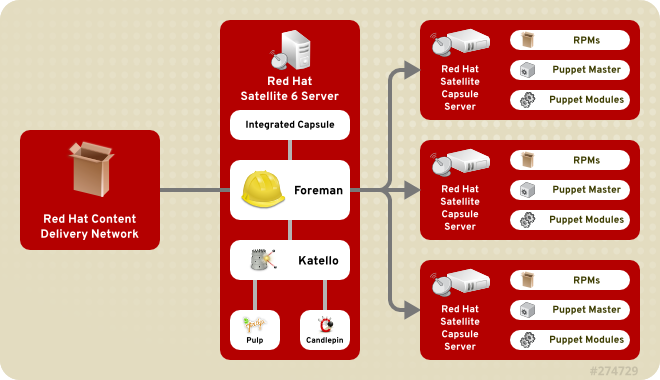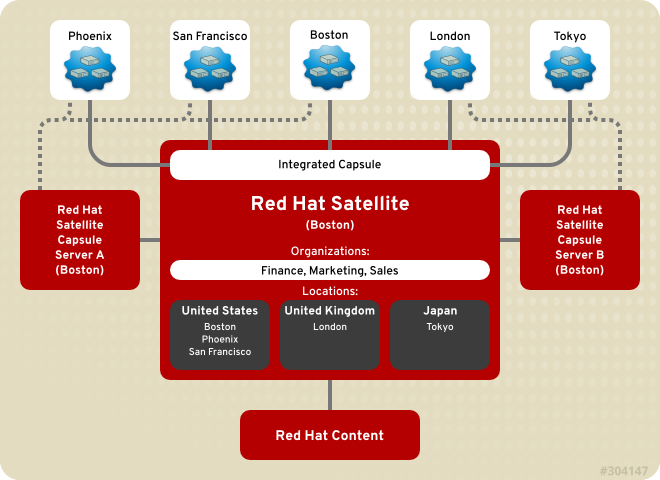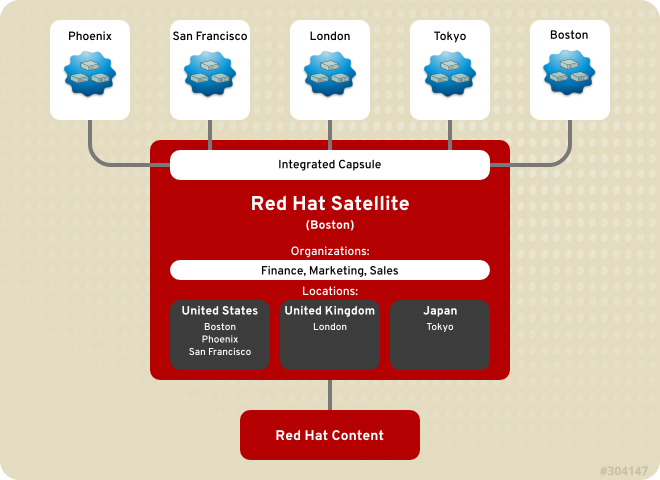In today’s fast-evolving IT landscape, organizations are increasingly adopting hybrid cloud strategies to balance the demands of modern applications with legacy workloads. Scalable VMs (virtual machines) are at the heart of this transformation, enabling businesses to efficiently manage and scale their infrastructure. Red Hat OpenShift Virtualization, built on the robust foundation of Kubernetes and KubeVirt, offers a powerful solution for seamlessly integrating and scaling virtual machines alongside containerized workloads. This blog explores how OpenShift Virtualization empowers organizations to achieve scalable VMs, optimize resource utilization, and modernize their infrastructure while preserving existing virtualization investments.
What is OpenShift Virtualization?
OpenShift Virtualization is an integrated feature of Red Hat OpenShift, a leading Kubernetes-based container platform, designed to manage both virtual machines and containers on a single, unified platform. By leveraging KubeVirt, an open-source project initiated by Red Hat, OpenShift Virtualization extends Kubernetes capabilities to support VM workloads, allowing organizations to run traditional virtualized applications alongside cloud-native, containerized ones. This unified approach eliminates the need for separate virtualization and container stacks, reducing complexity and operational overhead.
The platform uses the Kernel-based Virtual Machine (KVM) hypervisor, a mature and trusted technology embedded in the Linux kernel, to deliver high-performance virtualization. With OpenShift Virtualization, scalable VMs can be deployed, managed, and orchestrated using Kubernetes-native tools, such as the OpenShift console, CLI (oc or virtctl), and APIs, ensuring a consistent management experience across workloads.
Why Scalable VMs Matter
Scalable VMs are critical for organizations looking to optimize their IT infrastructure. Traditional virtualization platforms often struggle to meet the demands of modern, dynamic workloads due to their siloed nature and limited automation capabilities. OpenShift Virtualization addresses these challenges by offering:
Unified Management: Manage VMs and containers using the same tools and workflows, streamlining operations.
Resource Efficiency: Optimize resource utilization with Kubernetes’ scheduling and orchestration capabilities.
Seamless Scalability: Scale VMs dynamically to meet workload demands without downtime.
Hybrid Cloud Flexibility: Deploy and manage VMs across on-premises, hybrid, and multi-cloud environments.
Modernization Path: Gradually transition legacy VM-based applications to cloud-native architectures.
These benefits make OpenShift Virtualization an attractive choice for organizations seeking to modernize their infrastructure while maintaining support for critical VM-based workloads.
Key Features of OpenShift Virtualization for Scalable VMs
OpenShift Virtualization provides a robust set of features to enable seamless scaling of VMs. Below are the key capabilities that make it a powerful platform for achieving scalable VMs:
1. KubeVirt-Powered VM Management
KubeVirt, the backbone of OpenShift Virtualization, allows VMs to be treated as Kubernetes-native objects, defined as Virtual Machine Instances (VMIs) in YAML or JSON. This enables seamless integration with OpenShift’s scheduling, networking, and storage infrastructure. By managing VMs as pods, OpenShift leverages Kubernetes’ orchestration capabilities to ensure optimal placement, resource allocation, and scalability.
2. Dynamic Resource Allocation
OpenShift Virtualization supports dynamic resource allocation, such as CPU and memory hotplug, introduced in version 4.17. These features allow organizations to scale VM performance without downtime, ensuring scalable VMs can adapt to changing workload demands. For example, memory hotplug enables VMs to swap memory to disk during high demand, increasing workload density and improving resource utilization.
3. Live Migration
Live migration is a cornerstone of scalable VMs, allowing VMs to move between cluster nodes without interrupting operations. OpenShift Virtualization’s live migration capabilities, powered by KVM, ensure minimal latency overhead during migrations, even under intensive workloads. Recent performance improvements, such as Virt-API pods autoscaling, have enhanced migration efficiency, enabling organizations to scale up to thousands of VMs with minimal disruption.
4. High-Density VM Deployments
OpenShift Virtualization has demonstrated impressive scalability, with tests showing the ability to deploy and manage 6,000 VMs and 15,000 pods across a cluster in just seven hours. This scalability is achieved through optimized workflows, such as snapshot cloning from golden images and parallel VM booting, which maintain near-linear performance up to 1,600 VMs.
5. Storage and Networking Integration
Scalable VMs require robust storage and networking solutions. OpenShift Virtualization integrates with Kubernetes’ Container Storage Interface (CSI) and Container Network Interface (CNI) to provide flexible storage and networking options. For example, Red Hat Ceph Storage and Lightbits NVMe/TCP storage offer high-performance, scalable storage for VMs, while networking options like Multus and OVN-Kubernetes ensure low-latency, high-throughput connectivity.
6. Automation and GitOps
OpenShift Virtualization supports Kubernetes-native automation tools, such as OpenShift Pipelines (Tekton) and GitOps (ArgoCD), for managing VM lifecycles. VM configurations can be stored as YAML manifests in Git repositories, enabling declarative, version-controlled deployments. This automation reduces manual overhead and ensures consistent, repeatable scaling of VMs.
7. Enhanced Observability
The integration of Red Hat Advanced Cluster Management (ACM) 2.12 with OpenShift Virtualization 4.17 introduces advanced monitoring capabilities, including real-time dashboards for VM health, resource consumption, and performance metrics. These tools help administrators identify bottlenecks and optimize resource allocation for scalable VMs.
8. Warm Migrations with Migration Toolkit for Virtualization (MTV)
The Migration Toolkit for Virtualization (MTV) 2.7 supports warm migrations, allowing VMs to remain operational during the pre-copy phase when migrating from other hypervisors like VMware vSphere or Red Hat Virtualization. This reduces downtime and ensures business continuity during large-scale migrations.
Performance and Scalability Insights
Red Hat’s Performance and Scale team has conducted extensive testing to validate OpenShift Virtualization’s capabilities for scalable VMs. Key findings include:
Large-Scale Deployments: A test environment with 6,000 Red Hat Enterprise Linux 9.2 VMs and 15,000 idle pods demonstrated robust scalability, with near-linear parallelism up to 1,600 VMs. Beyond 3,200 VMs, slight deviations occurred due to queue buildup, highlighting the importance of tuning for ultra-high-density scenarios.
Migration Performance: Tests showed minimal latency overhead during live migrations, even under intensive workloads. For example, migrating 1,032 VMs across worker nodes maintained transparent performance for end-users.
Database Performance: A study using MariaDB on OpenShift Virtualization showed that VM throughput approached bare-metal performance with out-of-the-box defaults, scaling efficiently from 4 to 16 instances.
Storage and Networking: Benchmarks using tools like Fio and uperf demonstrated that OpenShift Virtualization, with storage solutions like Red Hat Ceph Storage and networking configurations like OVN-Kubernetes, delivers low-latency, high-throughput performance for scalable VMs.
These results underscore OpenShift Virtualization’s ability to handle demanding, high-scale workloads while maintaining performance and stability.
Best Practices for Scaling VMs with OpenShift Virtualization
To maximize the benefits of scalable VMs with OpenShift Virtualization, consider the following best practices:
Optimize Resource Allocation: Use KubeVirt’s resource request and limit settings to prevent overcommitment and ensure performance-sensitive VMs have adequate resources. Enable memory and CPU hotplug for dynamic scaling.
Leverage VM Templates: Create standardized VM templates with predefined CPU, memory, storage, and networking configurations to streamline provisioning and ensure consistency across deployments.
Implement Shared Storage: Use storage providers with Read-Write-Many (RWX) access mode, such as Red Hat Ceph Storage or Lightbits, to enable seamless live migrations and improve scalability.
Enable SR-IOV for High-Performance Workloads: For applications requiring low latency and high throughput, configure Single Root I/O Virtualization (SR-IOV) to provide direct access to network interfaces.
Use Persistent Volume Snapshots: Instead of traditional backups, utilize Kubernetes-native persistent volume snapshots for faster, storage-efficient VM data protection.
Monitor and Tune Performance: Regularly monitor VM performance using ACM 2.12 dashboards and apply workload-specific tuning based on Red Hat’s Tuning & Scaling Guide to optimize resource utilization.
Adopt GitOps Workflows: Store VM configurations in Git repositories and use tools like ArgoCD for declarative, auditable deployments, ensuring scalability and operational reliability.
Real-World Success Stories
Organizations across industries have successfully adopted OpenShift Virtualization to achieve scalable VMs:
New York University (NYU): NYU reduced infrastructure waste and operational costs by leveraging OpenShift Virtualization’s user-friendly GUI and integrated monitoring, enabling efficient VM management.
Orange International Networks and Services: Orange used OpenShift Virtualization to enhance containerized application isolation for mobile communications, aligning with regulatory requirements while scaling VMs seamlessly.
Tanobel: This organization benefited from cloud-native development while maintaining VM-based workloads, ensuring flexibility and business continuity.
These success stories highlight how OpenShift Virtualization enables organizations to achieve scalable VMs while meeting diverse operational and regulatory needs.
Comparison with Traditional Virtualization Platforms
Compared to traditional virtualization platforms like VMware vSphere, OpenShift Virtualization offers distinct advantages for scalable VMs:
Unified Platform: Unlike vSphere, which focuses solely on virtualization, OpenShift Virtualization integrates VMs and containers, reducing infrastructure complexity.
Cloud-Native Integration: OpenShift’s Kubernetes-based architecture supports cloud-native features like GitOps, service meshes, and pipelines, which are not native to vSphere.
Cost Efficiency: OpenShift Virtualization Engine, a dedicated edition for virtualization workloads, reduces unnecessary complexity and costs for organizations prioritizing VMs.
Scalability: While vSphere 8 Update 3 supports higher VM density in specific scenarios (e.g., 1.5 times more VMs than OpenShift 4.16.2 in a Principled Technologies study), OpenShift Virtualization excels in hybrid workloads and seamless integration with containerized applications.
However, organizations with heavy investments in VMware may need to consider migration complexity and specific workload requirements, such as support for Oracle DB or SAP HANA, which are not currently supported on OpenShift Virtualization.
Getting Started with OpenShift Virtualization
To begin scaling VMs with OpenShift Virtualization, follow these steps:
Install OpenShift Virtualization: Deploy the hyperconverged operator in the openshift-cnv namespace using the OpenShift console. Select the automatic approval strategy for seamless updates.
Configure Cluster Resources: Ensure bare-metal cluster nodes are used for optimal performance. Configure storage (e.g., Red Hat Ceph Storage) and networking (e.g., OVN-Kubernetes or Multus) to support scalable VMs.
Create VM Templates: Define standardized templates for VM provisioning to simplify deployment and ensure consistency.
Test and Tune: Use Red Hat’s Tuning & Scaling Guide to optimize VM performance and conduct scale tests to validate your setup.
Leverage Migration Tools: Use the Migration Toolkit for Virtualization (MTV) to migrate VMs from other hypervisors with minimal downtime.
For hands-on support, Red Hat offers mentor-based consulting and a Virtualization Migration Assessment to guide organizations through the process.
Conclusion
OpenShift Virtualization redefines how organizations manage and scale virtual machines, offering a unified platform that bridges traditional virtualization with cloud-native architectures. By leveraging Kubernetes, KubeVirt, and KVM, it delivers scalable VMs with unmatched flexibility, performance, and efficiency. Features like live migration, dynamic resource allocation, and advanced observability empower organizations to handle large-scale workloads while reducing operational complexity. With real-world success stories and a robust partner ecosystem, OpenShift Virtualization is a strategic choice for organizations looking to modernize their infrastructure and achieve scalable VMs.
Check out the video: Click here
FAQs
1. What is OpenShift Virtualization, and how does it support scalable VMs?
OpenShift Virtualization is an integrated feature of Red Hat OpenShift, a Kubernetes-based container platform, that enables the management of virtual machines (VMs) and containers on a unified platform. It leverages KubeVirt and the Kernel-based Virtual Machine (KVM) hypervisor to deliver high-performance virtualization. Scalable VMs are supported through features like dynamic resource allocation, live migration, high-density deployments, and Kubernetes-native orchestration, allowing organizations to efficiently scale VM workloads to meet demand.
2. How does OpenShift Virtualization differ from traditional virtualization platforms like VMware vSphere?
Unlike traditional platforms like VMware vSphere, which focus solely on virtualization, OpenShift Virtualization integrates VM and container management within a single Kubernetes-based platform. This unified approach reduces infrastructure complexity, supports cloud-native features like GitOps and automation, and enables scalable VMs across hybrid and multi-cloud environments. While vSphere may offer higher VM density in specific scenarios, OpenShift Virtualization excels in hybrid workloads and seamless container integration.
3. What are the key benefits of using OpenShift Virtualization for scalable VMs?
OpenShift Virtualization offers several benefits for scalable VMs, including:
Unified Management: Manage VMs and containers with the same Kubernetes-native tools (OpenShift console, CLI, APIs).
Resource Efficiency: Optimize CPU, memory, and storage with Kubernetes scheduling and dynamic allocation.
Seamless Scalability: Scale VMs dynamically using features like CPU/memory hotplug and live migration.
Hybrid Cloud Flexibility: Deploy VMs across on-premises, hybrid, or multi-cloud environments.
Modernization Path: Transition legacy VM-based applications to cloud-native architectures while preserving investments.
4. How does OpenShift Virtualization achieve scalability for large VM deployments?
OpenShift Virtualization achieves scalability through:
High-Density Deployments: Tests have shown support for 6,000 VMs and 15,000 pods in a single cluster, with near-linear performance up to 1,600 VMs.
Optimized Workflows: Features like snapshot cloning from golden images and parallel VM booting reduce provisioning time.
Live Migration: Move VMs between nodes without downtime, supported by low-latency KVM migrations and Virt-API pod autoscaling.
Dynamic Resource Allocation: Adjust CPU and memory on-the-fly to meet workload demands, ensuring scalable VMs.
5. What is live migration, and why is it important for scalable VMs?
Live migration allows VMs to move between cluster nodes without interrupting operations, ensuring high availability and resource optimization. In OpenShift Virtualization, live migration is powered by KVM and enhanced by features like Virt-API pod autoscaling, minimizing latency overhead. This capability is critical for scalable VMs, as it enables dynamic load balancing and maintenance without disrupting workloads.
6. Can OpenShift Virtualization handle high-performance workloads?
Yes, OpenShift Virtualization supports high-performance workloads through:
SR-IOV (Single Root I/O Virtualization): Provides direct access to network interfaces for low-latency, high-throughput applications.
High-Performance Storage: Integrates with solutions like Red Hat Ceph Storage and Lightbits NVMe/TCP for fast, scalable storage.
Performance Tuning: Leverages Red Hat’s Tuning & Scaling Guide to optimize VM performance, with benchmarks showing near-bare-metal throughput for databases like MariaDB.
7. How does OpenShift Virtualization integrate with storage and networking?
OpenShift Virtualization uses Kubernetes’ Container Storage Interface (CSI) and Container Network Interface (CNI) for flexible integration:
Storage: Supports providers like Red Hat Ceph Storage and Lightbits with Read-Write-Many (RWX) access modes, enabling seamless live migrations and scalable VMs.
Networking: Offers options like OVN-Kubernetes and Multus for low-latency, high-throughput connectivity, with SR-IOV for performance-critical workloads.
8. What is the Migration Toolkit for Virtualization (MTV), and how does it support scalable VMs?
The Migration Toolkit for Virtualization (MTV) 2.7 facilitates the migration of VMs from other hypervisors (e.g., VMware vSphere, Red Hat Virtualization) to OpenShift Virtualization. It supports warm migrations, allowing VMs to remain operational during the pre-copy phase, minimizing downtime. This ensures business continuity during large-scale migrations, making it easier to adopt scalable VMs on OpenShift.
9. How does OpenShift Virtualization support automation for scalable VMs?
OpenShift Virtualization leverages Kubernetes-native automation tools like OpenShift Pipelines (Tekton) and GitOps (ArgoCD). VM configurations are stored as YAML manifests in Git repositories, enabling declarative, version-controlled deployments. This automation reduces manual overhead, ensures consistent scaling, and supports scalable VMs across large clusters.
10. What monitoring and observability tools are available for managing scalable VMs?
OpenShift Virtualization integrates with Red Hat Advanced Cluster Management (ACM) 2.12, providing real-time dashboards for VM health, resource consumption, and performance metrics. These tools help administrators identify bottlenecks, optimize resource allocation, and ensure the performance of scalable VMs. Additional monitoring can be achieved through integration with tools like Prometheus and Grafana.













